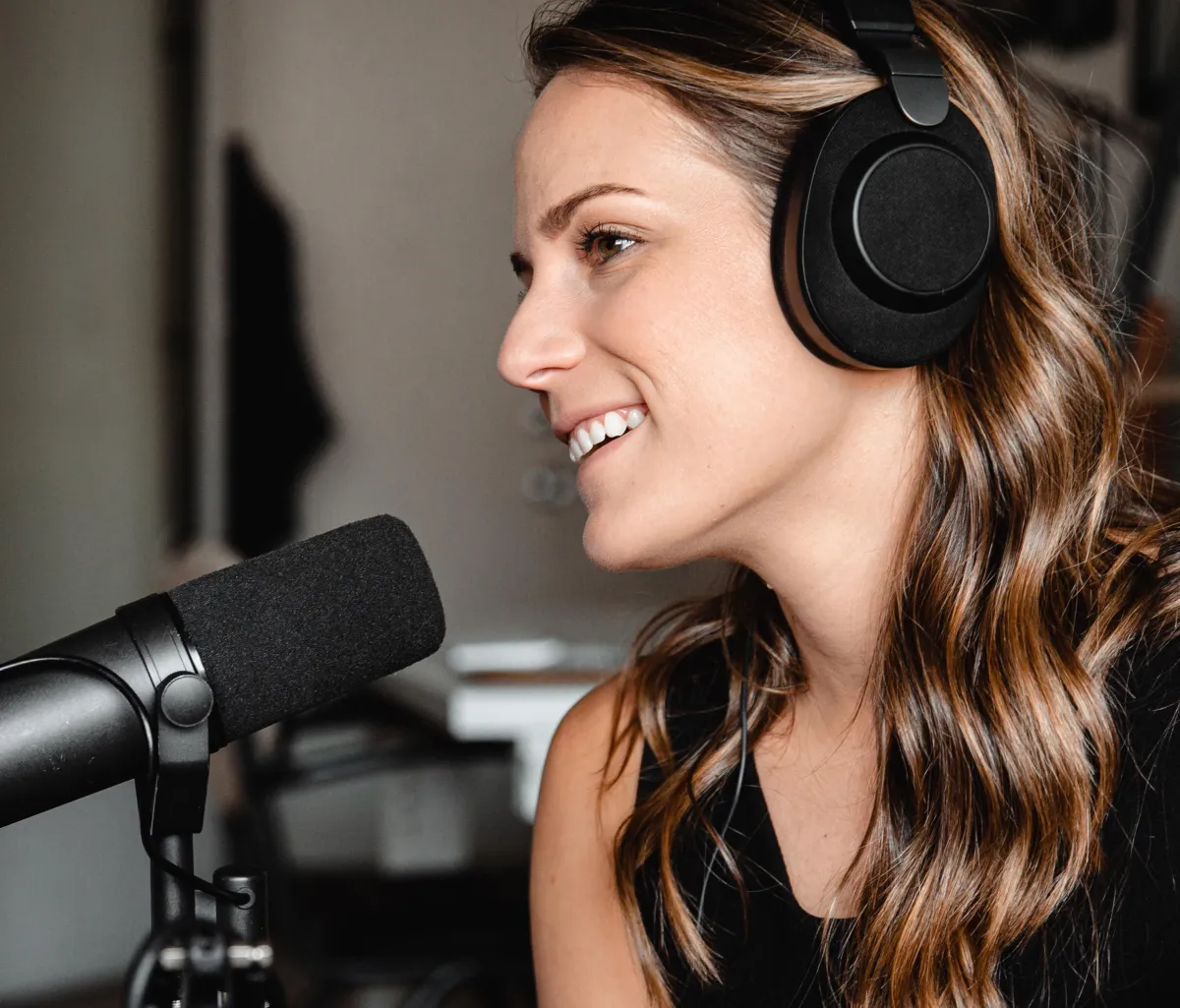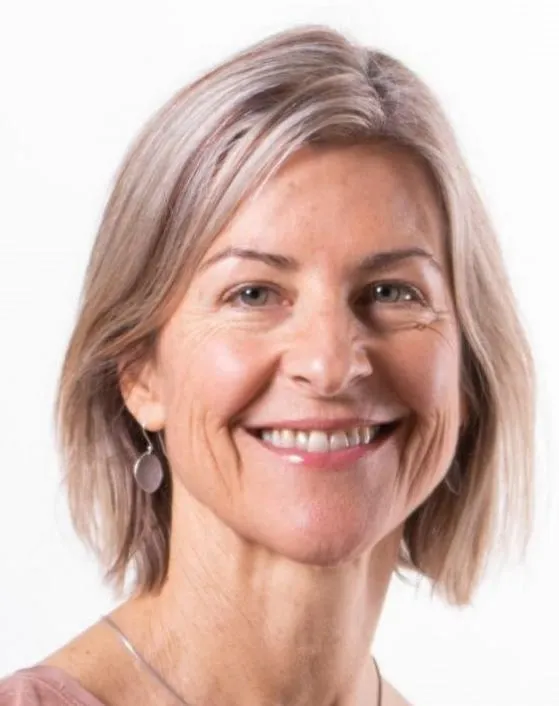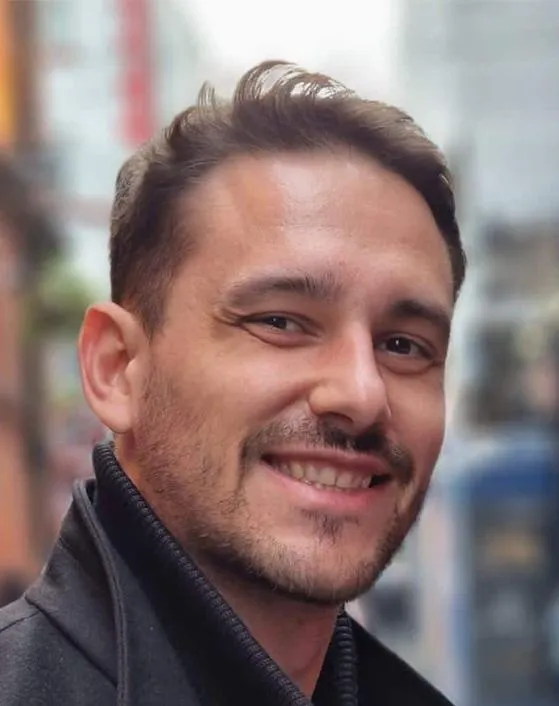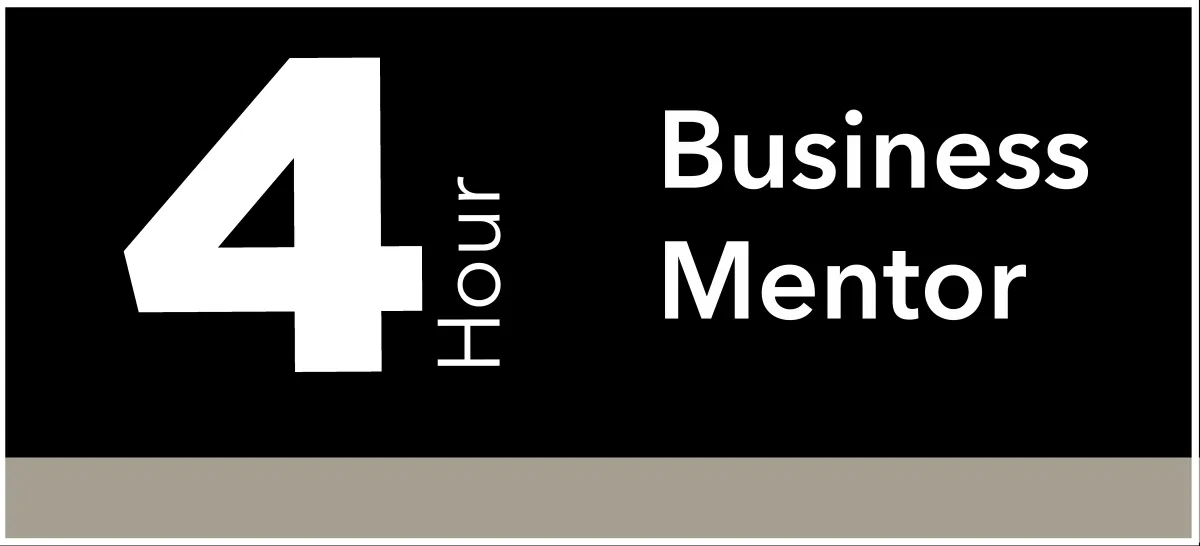Show Notes
Podcast
Podcast



Jim Chats with...
Louise Goode and Manuel Brunner
Episode 010
January 11, 2024
What is the Impact
of Plastic Chemicals
on Human Health?
How can we design safer plastic alternatives?
In this Episode
In this Eco Scale Radio episode I have the good fortune of interviewing Louise Goode and Manuel Brunner from the Minderoo Foundation.
The Problem
Plastic is everywhere.
It’s almost impossible to live your life without plastic these days.
Our society has become dependent on plastic in all aspects of life, including: household goods, food processing, packaging, personal care products, and medical applications.
More than 8 billion tons of plastic were produced between 1950 and 2015.
Over 350 million metric tons of plastic waste are discarded annually.
Global plastic production has been growing exponentially since the 1960s.
More than 13,000 chemicals are used to make plastics. These include: monomers, catalysts, additives (plasticizers, flame retardants, UV stabilisers, pigments, etc.), processing aids, not intentionally added substances (NIAS).
For the vast majority of plastic additives, we know little about the degree of human exposure or possible human health impacts.
The widespread presence of plastics and their degradation products in the environment leads to inevitable exposure through the food we eat and the air we breathe.
This exposure carries various health risks, particularly due to the chemical composition of plastics and their ability to disrupt biological processes.
Mitigating these risks involves a multi-faceted approach, including:
reducing plastic use and pollution
improving waste management
changing societal attitudes towards plastic consumption and waste
conducting further research into the health impacts of plastics
developing safer alternatives to current plastic materials
The Solution
The way we have handled the production, use, and disposal of plastics and chemicals used in plastics is insane.
We have run amok far too long.
After decades of acting like spoiled, self-righteous, narcissistic brats, it’s time to grow up and start acting like responsible adult stewards.
It’s time to choose the “hard right” and stop doing the “easy wrong”.
For the sake of safeguarding the health of future generations and of the planet, we need to educate ourselves about the harms of plastic.
A team of scientists at the Minderoo Foundation in Australia (in collaboration with Australian research institutes) asked two powerful questions:
What is the impact of plastics on human health?
How can we design safer plastic alternatives?
The team recently spent 3 years screening more than 100,000 papers to find studies on plastic getting into the human body and how it could be harming our health.
After doing this screening, they came up with 3,500 primary studies on plastic health from 1960 to 2022.
These finding have been used to create the first-of-its-kind interactive Plastic Health Map, which maps the existing research on the effects of plastic chemicals on human health.
The Plastic Health Map includes a comprehensive list of plasticizers (e.g. phthalates), flame retardants (e.g. PCBs), bisphenols, PFASs, and polymers.
1,500 individual compounds went into the research for related human health studies.
In the absence of health monitoring for these plastic chemicals, the Plastic Health Map shows what has been studied over several decades and is a tool to help us transition to a world where plastic is more sustainable, safer, and free of toxic chemicals.
The Plastic Health Map is an open access tool for researchers, clinicians, policymakers, and interested citizens on the state of human health research and plastic chemicals exposure. It provides important insights for policy, governance, and further scientific enquiry.
Bottom line, this map is a gift to the research world and the policy makers.
The database includes interactive plots and heatmaps showing the number of articles published each year.
The plots and heatmaps can be filtered by plastic chemical class, individual chemical, health outcome category, year of publication, study design, population (including country), age group and general/special exposure risk.
Article references can be viewed and downloaded based on the filters selected.
You can EXPLORE THE DATA at minderoo.org/plastic-health-map
Key Findings
The Plastic Health Map has identified significant gaps in research on how plastic materials affect human health, including:
Of more than 1,500 CHEMICALS MAPPED in the Plastic Health Map, less than 30% have been investigated for human health impacts.
MANY HUMAN HEALTH OUTCOMES have NOT been investigated for any given chemical class.
No studies screened in the project timeframe looked at the HEALTH IMPACTS OF MICRO- AND/OR NANOPLASTICS.
Very few studies were conducted in LOW-INCOME COUNTRIES.
Limited studies focused on OLDER/ELDERLY POPULATIONS.
NO STUDIES looked at health outcomes in children associated with their fathers' exposure to plastic chemicals.
WHEREAS MORE THAN 1,000 STUDIES examined effects of maternal plastics exposure on children.
Going Forward
The amount of new virgin plastic being produced is skyrocketing exponentially and it’s going to keep increasing.
We are going to be drowning in plastic soon.
We have no idea of how these plastics affect our health.
We need to get better control of this situation.
We need to figure out how to control the toxic chemicals in the plastic materials we use.
We need to have plastic chemicals rigorously tested before they are introduced into products humans are exposed to.
We need comprehensive biomonitoring.
We need better regulations to protect human health.
We need good monitoring to understand the impact of chemicals present in plastics used for food packaging, personal care items, household furnishings, and carpeting.
We need to see what these chemicals are doing to human health.
Chemical regulations also need to take a look at our multiple exposure points to plastics.
We need to find more answers to the following questions:
What is the impact of plastic chemicals on human health?
How can we design safer plastic alternatives?
Who is Louise Goode?
Louise is the Principal Researcher, Plastics & Human Health department of Minderoo Founcation that just launched the first-of-its-kind “Plastic Health Map”.
This database is informing global efforts to tackle problematic plastics and innovate safer plastic alternatives.
She is involved in research into the impact of plastics on human health at the Minderoo Foundation, in the area of Flourishing Oceans.
She also has a background in clinical research in spinal cord injury at University of Western Australia.
Who is Manuel Brunner?
Manuel is a chemist with a PhD from the University of Western Australia.
In his role as Principal, Chemistry and Research at The Minderoo Foundation, he explores how we can create a sustainable chemical and plastics industry for the benefit of people and the planet.
About the Minderoo Foundation
Minderoo Foundation takes on tough, persistent issues with the potential to drive massive change.
Andrew and Nicola Forrest founded Minderoo Foundation in 2001, and continue to drive its philanthropic mission today.
Minderoo Foundation is proudly Australian, independent, forward thinking and seeks effective, scalable solutions.
Minderoo Foundation’s vision is a society that values all people and natural ecosystems.
Minderoo Foundations focus is on:
COMMUNITIES - Uplifting child and community wellbeing through place-based approaches and early years solutions.
GENDER AND EQUALITY - Unleashing the potential of humanity through equality for women and girls.
OCEANS - Returning the ocean to a healthy state, free from pollution and safeguarded for future generations.
IMPACT MISSIONS - Discrete projects in response to urgent societal challenges and threats.
Subscribe to this Podcast
This podcast is available at the following podcast providers:
Guest Resources
Links you can use to follow and connect with Louise Goode, Manuel Brunner, and Minderoo.
Plastic Health Map - Map
Louise Goode - LInkedIn profile
Manuel Brunner - LinkedIn profile
Minderoo Foundation - Website | LinkedIn profile
Plastic Resources - from Minderoo
Plastic Waste Makers Index - Scorecard
Value Bombs
1) More than 13,000 chemicals are used to make plastics.
2) Recycled plastic is lower quality and more expensive than virgin resin.
3) The Plastic Health Map is a FREE open access tool that any one can use to study human health research and plastic chemicals exposure.
4) Heat and plastic around food does NOT work. You don’t want chemicals in plastics to leak into your foods.
5) Very few studies were conducted in LOW-INCOME COUNTRIES.
6) Minderoo Foundation takes on tough, persistent issues with the potential to drive massive change.
7) The Good, the Bad, and the Ugly alternatives to plastic.
8) Global levy on virgin plastic.
9) There are teams of scientists out there focused on finding answers to the following questions:
What is the impact of plastic chemicals on human health?
How can we design safer plastic alternatives?
Sponsors
This episode is brought to you by Audible.
Finding the opportunity to read can be a challenge. Many people rely on audiobooks when they don’t have time to read. An audiobook allows you to listen to the latest bestseller, learn a new skill, and gain new insights, while commuting, cooking dinner, or cleaning up the house.
I recommend listening to the following books:
by Capt. Charles Moore, Cassandra Phillips
by Susan Freinkel
By Wallace J. Nichols
Garbology: Our Dirty Love Affair with Trash
By Edward Humes
Cradle to Cradle: Remaking the Way We Make Things
by William McDonough
Hurricane Lizards and Plastic Squid: The Fraught and Fascinating Biology of Climate Change
By Thor Hanson
Buzz: The Nature and Necessity of Bees
By Thor Hanson
Wasteland: The Secret World of Waste and the Urgent Search for a Cleaner Future
By Oliver Franklin-Wallis
Show Notes - Outline
Introduction
Has anything like the Plastic Health Map been done before?
Manuel’s background and how Manuel got involved in the Plastic Health Map
Louise’s background and how she got involved in the Plastic Health Map
Who is the Minderoo Foundation? - Gender Equality, Communities, Oceans Focus (including Plastics)
Why did Minderoo decide to create the Plastic Health Map?
Undiscovered Public Knowledge
Sleeping Beauties
Challenges in creating the Plastic Health Map
The Health Outcomes Database
Challenges in documenting the chemicals used in plastic
How do you define plastic?
Who is the target audience for the Plastic Health Map?
When was the Map made public?
What has been the response to the Map so far?
How has the plastic industry responded?
Example of Health Outcomes of People being exposed to plastics
Does the Map include microplastics and nanoplastics studies?
Where do we go from here? What are our alternatives?
Can we recycle safe plastics our way out of this mess?
A global levy on virgin plastic
Other alternatives to plastic (The Good, the Bad, the Ugly)
How do you apply this knowledge about the impact of plastics into your daily lives?
Suggestion for entrepreneurs who want to leverage information in the Plastic Health Map
What do you do that gives you hope? What do you do that helps you cope?
Hash Tags
#cl
#H??Dryden
#S??icrolayer
Hashtags
#plastic
#plastics
#plastichealthmap
#podcast
#ecoscaleradio
#humanhealth
#plasticrecycling
#plasticalternatives
#minderoo
#alternativestoplastic
A team of scientists at the Minderoo Foundation in Australia asked two powerful questions:
What is the impact of plastic chemicals on human health?
How can we design safer plastic alternatives?
Items Mentioned in This Interview
The following items were mentioned in our interview with Louise Goode and Manuel Brunner.
Undiscovered Public Knowledge
Sleeping Beauties
Global Plastics Treaty
International Classification Disease Structure
Global Plastic Summit
Bonus Report Not Mentioned in This Interview
Here is an additional report for those who want to take a deeper dive into the health hazards of plastics.
FAQs
Q: What is plastic?
A: The structure in plastic comes from a polymer. The added functionality comes from compounding it with certain types of additives and processing it in the right way.
Plastic is a synthetically or chemically modified polymer to which additives may or may not be added. And processed into a certain functionality.
Plastic can contain chemicals you know that are in there. Plastic might also contain chemicals we know nothing about.
There may be transformation products. Where chemicals have transformed within that material and we don’t know about them or how they effect humans when we handle them.
Also during processing different chemicals can be absorbed into the plastic material.
So we might be exposed to chemicals that were not the intention of the manufacturer.
And then when plastic gets into the environment it picks up a lot of chemicals. Some of them very toxic.
There is a lot that we do know that goes into plastics and a lot that we don’t know.
Q: What makes this Map different?
A: The Plastic Health Map is the first of its kind systematic search on several different classes of plastic chemicals to try to figure out in the world of plastic chemicals which have been studied in living breathing human beings and which haven’t. And how they have been studied in relation to health.
It’s a study of peer reviewed literature put into a map. From 1960 to 2022.
Q: Who is the target audience for the Plastic Health Map?
A: The Plastic Health Map is the first of its kind systematic search on several different classes of plastic chemicals to try to figure out in the world of plastic chemicals which have been studied in living breathing human beings and which haven’t. And how they have been studied in relation to health.
It’s a study of peer reviewed literature put into a map. From 1960 to 2022.
researchers
decision makers and policy maker such as government agencies
regulators
people working in public health working to protect human health
doctors and other professionals working in health
interested individuals
people working in NGOs doing work related to plastic
individuals who are curious about the science
Q: What are some Plastic alternatives?
A: The plastic alternatives fall into three groups:
Ugly – solutions that are like greenwashing. In the best case they will not change anything. Just market the product a little bit better. Worst case they can be misleading and cause more harm than benefit. Example: regrettable substitutions. Remove BPA from a product and replace it with BPS. Which is basically the same thing with just one chemical group less. Then market it as “BPA free”. But is it really a different product?
Bad – Gimmicky solutions that wont scale such as: “Made from Ocean Plastics”. On the label it states “Made from Ocean Bound Plastic.” It’s just another word for recycling. This diverts attention from what could be done better.
Good – Biodegradables and Compostables. You have to use these where it makes sense. It does not make sense to make a laptop casing biodegradable.
Q: What is a global levy on virgin plastic?
A: It is a levy that increases the price of virgin plastic to make recycled plastic price competitive.
How a Single Paper Grew Into a Forest
Handprint co-founder Dr. Ryan Merrill was commissioned to write a paper by the United Nations on “Digital Sustainability.”
His research paper won the Financial Times “Paper of the Year.”
His work helped giant payments platform Alipay in China to launch a campaign called Ant Forest on the Alipay mobile client in August 2016.
It encourages users to lower carbon emissions by planting trees when users engage in activities that reduce carbon emissions.
They planted 350 million trees in the first 8 months of the launch of the app.
Dr. Ryan Merrill’s paper inspired the creation of Ant Forest which has planted hundreds of millions of trees.
Help Us Spread the Word
Help us help entrepreneurs around the world to innovate, implement and scale their positive impact on climate restoration and ecosystem regeneration.
Help us help others make a positive dent in the future for our planet and future generations.
Please...
1) Go to your favorite podcast provider.
2) Go to the Eco Scale Radio podcast and Subscribe to this podcast. Leave a review. Like it. Share it.
You know the drill.
Thank you very much for your support.
Additional Eco Scale Radio Episodes You May Enjoy
Dan Sherrard-Smith
The Biggest Secret Your Banks Don't Want You to Know About
Peter Fiekowski
Climate Restoration is an Idea Whose Time has Come
Ron De Laet
Cooling Climate Chaos
Jorge Lopez-Doriga
The Natural Revolution: AMAYU, Superfruits that Protect Forests
Killer Resources
Are there profit opportunities hidden somewhere in your business that you don’t know about and don’t know how to find?
I bring a different perspective.
I show you how to think a little bit differently.
I help you unlock the potential that is sitting there already in your company.
Part of what I do is to show you opportunities you're not seeing - things that are already there. And I show you how you can structure deals in ways that you probably have never even thought of before.
Book a Half-Day Consult with a Business Mentor who can work with you to create a roadmap you can use to go from where you are now to where you want to be and help you find opportunities in your existing business.
<< Previous | All Podcasts | Next >>
Stay up to date with the
Eco Scale Radio Podcast
Explore the Intersection of:
Entrepreneurs
Climate Change
Action (Not Talk)
Regeneration
Entrepreneurs
Climate Change
Action (Not Talk)
Regeneration
Join Our Podcast Newsletter
Sign up to receive
Podcast updates, news, and exclusive offers.
Are there profit opportunities hidden somewhere in your business that you don't know about and don't know how to find?
A Business Mentor can:
bring you a different perspective.
show you how to think a little bit differently.
help you unlock the potential that is sitting there already in your company
show you opportunities you're not seeing - things that are already there.
show you how you can structure deals in ways that you probably have never even thought of before.
Book a Half-Day Consult with a Business Mentor to:
find hidden profit opportunities
create a roadmap you can use to go from where you are now to where you want to be.
Attention:
Food & Beverage Manufacturers
Nutraceutical & Pharmaceutical Formulators
Why Learn From Me?
your needs
What You Need To
Grow Your Business
Instant Customers
Instant Sales
Instant Profits
More Financial Options
Established Brand Recognition
Instant Contacts
Instant Systems
Instant Employees
our solutions
What We Offer To
Grow Your Business
Scale/Grow with Strategic Acquisitions
Business Mentoring
Half-Day Consultation
Mastermind of Like-Minded Business Owners
If you are ready to take the Next Step,
Book a FREE 20-minute Discovery Call
(see form below).
Let’s sit down and talk about:
You business growth needs.
The obstacles you are facing.
What you are looking for. Is it learning new skills, getting more done in less time, or increasing your creativity.
Buying an existing business
is SO much easier than starting one.
And it requires the
same amount of capital (or less).
One comes with pre-existing sales
and proof of concept.
The other comes with headaches.
If you are ready to tackle
your toughest business problems...
with a Business Mentor
For Our Guest
Prior to Interview
Follow Us
This site is not a part of Google™ website or network of sites
such as Youtube™ or any company owned by Google™ or Youtube™
Additionally this website is not endorsed by
Google™ Youtube™ or Facebook Inc. or LinkedIn in any way.
This site and the products and services offered on this site
are not associated, affiliated, endorsed, or sponsored
by Facebook, nor have they been reviewed tested or certified by Facebook.
Google™ is a trademark for all their respective companies.
Facebook™ is a trademark of Facebook, Inc.
LinkedIn™ LinkedIn Corporation


